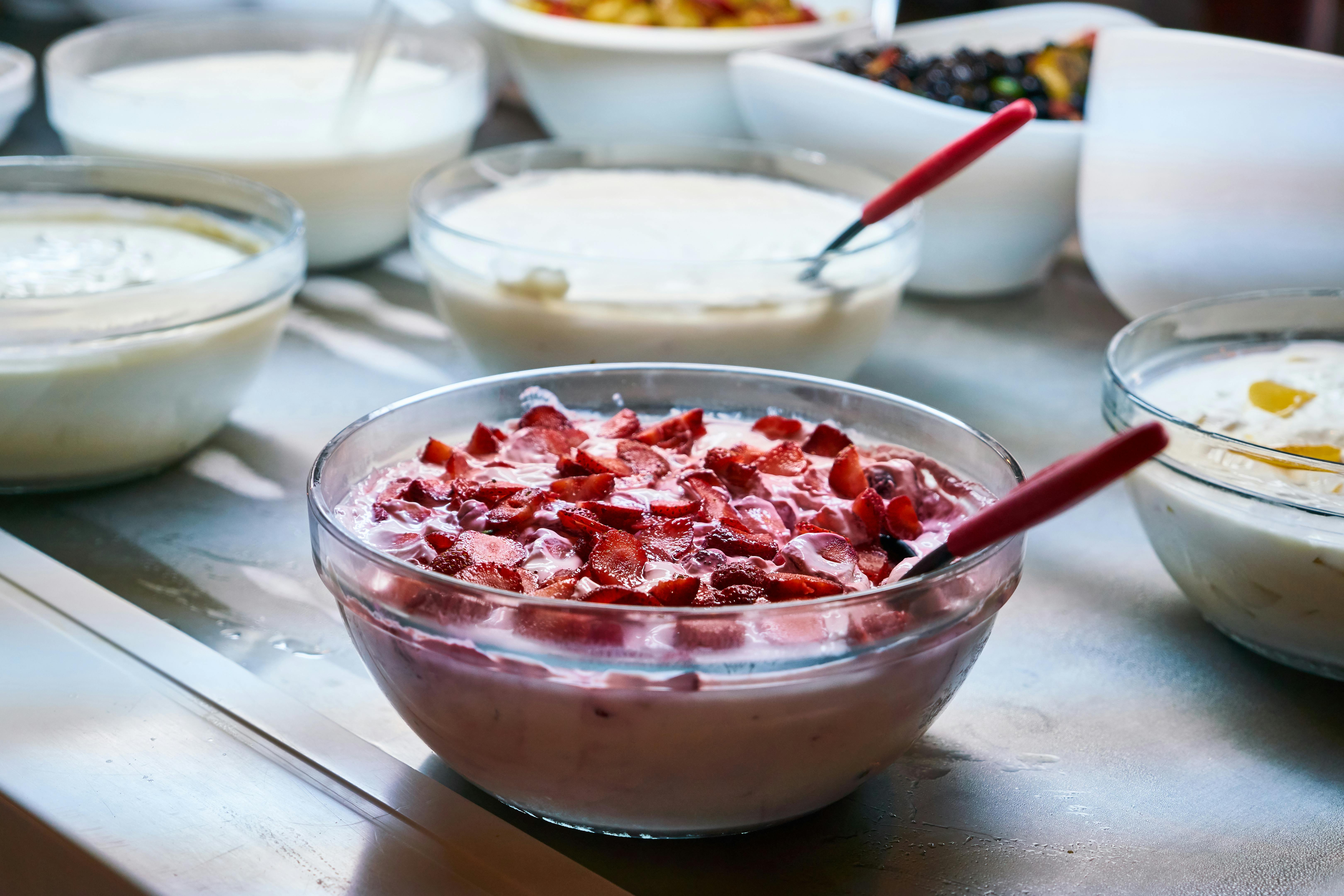
Effective Ways to Optimize Your Low Histamine Diet Plan in 2025
As more individuals embrace healthier lifestyles, the significance of dietary choices has taken center stage. For those managing histamine intolerance, navigating a low histamine diet can feel challenging. Histamine intolerance involves adverse reactions to histamine-rich foods, leading to a variety of symptoms. Implementing a well-structured low histamine diet plan can alleviate discomfort and improve overall well-being. This article explores effective strategies for optimizing a low histamine diet, providing insights into food choices, meal planning, and lifestyle adjustments.
The benefits of adhering to a low histamine diet are numerous, including better digestive health, enhanced energy levels, and reduced inflammation. Whether you're newly diagnosed or seeking to refine your approach, you'll discover practical tips for successful meal planning, strategies to identify safe foods, and delicious low histamine recipes to keep your palate satisfied. Let’s dive in and explore how to effectively manage histamine intolerance through nutrition.
Understanding Histamine Intolerance and Its Impact on Health
Before we delve into optimizing your low histamine diet, it’s essential to understand what histamine intolerance involves. Histamine is a naturally occurring compound in the body, pivotal for various physiological functions, including immune response and digestion. However, excessive levels can lead to uncomfortable symptoms such as headaches, hives, and gastrointestinal issues. Factors such as gut health and diet significantly influence histamine levels.
What Causes Histamine Intolerance?
Histamine intolerance arises when the body is unable to effectively break down histamine, leading to a buildup. Often, this condition is linked to issues like gut dysbiosis, which can hinder the enzymatic breakdown of histamine. Additionally, certain foods are notorious for being high in histamine, exacerbating the challenge for those sensitive to it. Examples of such foods include aged cheeses, processed meats, and fermented products.
Identifying Histamine Intolerance Symptoms
Recognizing the symptoms of histamine intolerance is crucial for effective management. Common reactions include skin irritations, nasal congestion, fatigue, and even digestive disturbances. Being attuned to these symptoms allows individuals to make informed choices about their dietary habits. For comprehensive symptom management, it is advisable to consult healthcare professionals and consider dietary modifications.
The Role of Gut Health in Histamine Sensitivity
Gut health plays a pivotal role in managing histamine sensitivity. A balanced gut microbiome can aid in the proper breakdown of histamine. Incorporating probiotic foods can support this balance, although it's essential to choose strains known for being low in histamine. Diets rich in anti-inflammatory foods can also contribute to gut health, further mitigating histamine reactions.
Exploring Foods High in Histamine
A crucial aspect of optimizing your low histamine diet is to be aware of foods that should be avoided. Common high histamine foods include fermented dairy, preservatives, and alcohol. Understanding these triggers helps in planning meals that minimize histamine intake while maximizing nutritional intake.
Practical Steps to Create a Low Histamine Meal Plan
Creating an effective low histamine meal plan requires careful planning and creativity. Focus on fresh, whole foods that are naturally low in histamine. This includes fresh meats, certain vegetables, and gluten-free grains. Transitioning to a low histamine lifestyle not only alleviates symptoms but can also contribute to overall health improvements, including enhanced digestive health and energy levels.
Essential Low Histamine Foods and Recipes
Once you comprehend the foundations of histamine intolerance, the next step involves identifying which foods to integrate into your diet. A list of low histamine foods serves as a reliable guide for planning meals. Fresh fruits like apples and pears, vegetables such as zucchini and cabbage, and protein sources like chicken are all excellent choices for crafting delicious, low histamine recipes.
Creating Your Low Histamine Food List
When developing your food list, prioritize fresher options. Foods such as fresh fish, turkey, and root vegetables can serve as staples. Keeping a repository of low histamine foods helps in making quick decisions when grocery shopping or eating out.
Delicious Low Histamine Recipes to Try
Cooking can be an enjoyable activity even on a restricted diet. Consider trying simple low histamine recipes like baked chicken with steamed zucchini or a refreshing apple salad. These dishes are not only easy to prepare but also aid in managing histamine levels effectively. For more cooking inspiration, you can explore effective low histamine practices in various recipe articles.
Safe Cooking Techniques for Low Histamine Meals
Utilizing appropriate cooking techniques can enhance the flavors of low histamine foods while maintaining their safety. For example, steaming or grilling meats can minimize the formation of histamines that occur during the cooking process. Additionally, employing herbs and fresh ingredients can elevate the taste without triggering intolerance symptoms.
Innovative Low Histamine Substitutes
Sometimes, it’s necessary to replace common ingredients that contain histamines. Opt for alternatives like coconut yogurt instead of dairy or fresh herbs instead of marinades that may have preservatives. These substitutes allow for versatility within your cooking and help keep meals exciting without compromising health.
Meal Prep for Busy Lifestyles
Meal prepping can be a game-changer for those with busy schedules. Prepare low histamine meals in advance to eliminate last-minute stress. Consider creating larger batches of low histamine meals that can be frozen for those evenings when cooking may feel overwhelming. This makes it easier to adhere to your dietary restrictions without sacrificing convenience.
Navigating Social Situations with Histamine Intolerance
Managing histamine intolerance extends beyond the kitchen. Social gatherings pose unique challenges when dining out or attending events. It's crucial to identify safe dining options and communicate effectively with hosts about your dietary needs.
Understanding Histamine in Beverages
When managing histamine intolerance, it is equally important to monitor beverage choices. Many alcoholic beverages and caffeinated drinks can be high in histamine, leading to adverse reactions. Opt for options such as herbal teas or freshly squeezed juices that are histamine-safe.
Tips for Dining Out Safely
Before dining out, consult restaurant menus and identify establishments that accommodate dietary restrictions. Don’t hesitate to communicate your needs with the staff; many restaurants are happy to modify dishes to suit your requirements. Having a clear understanding of which foods are safe can enhance your dining experience.
Social Gatherings and Low Histamine Choices
When attending social events, consider bringing your own low histamine snack to ensure you have a safe option on hand. Fresh fruits or vegetable platters can be easy and appealing choices that everyone will enjoy.
Building Community Support
Connecting with others who share similar dietary restrictions can provide invaluable support. Online forums or local support groups allow individuals to share low histamine recipes and strategies for managing their diet effectively.

Common Mistakes to Avoid with a Low Histamine Diet
It's easy to make missteps when adapting to a low histamine diet. Awareness of these common mistakes can accelerate your journey toward managing histamine intolerance.
Overlooking Hidden Histamines in Foods
Many processed foods contain hidden histamines or additives that can trigger reactions. Always read labels carefully and opt for whole foods whenever possible. Being knowledgeable about these hidden sources is vital in maintaining a low histamine lifestyle.
Failing to Track Histamine Intake
An effective approach to managing your diet involves monitoring your histamine intake regularly. Keeping a food diary or using apps to document what you eat can help you identify any foods that may trigger reactions. Adjusting your diet based on this information encourages successful management of symptoms.
Neglecting Nutritional Balance
While focusing on avoiding high histamine foods, it’s crucial not to neglect overall nutritional balance. Incorporate a variety of nutrients and consider consulting with a nutritionist specializing in histamine intolerance to ensure that your dietary restrictions do not lead to deficiencies.
Failing to Experiment with New Foods
Don't shy away from exploring new low histamine foods or recipes. Staying stagnant in your food choices can lead to boredom and reduce the joy of eating. Embrace culinary creativity by trying seasonal foods and varying your meals to keep things exciting.
Q&A: Managing Histamine Intolerance Healthy Choices
What are the primary symptoms of histamine intolerance?
Common symptoms include headaches, digestive disturbances, skin reactions, and nasal congestion. Awareness of these symptoms helps individuals gauge how well they're managing their diet.
Can I still enjoy social events with histamine intolerance?
Yes, with the right planning. Prioritize communicating your dietary needs and consider bringing your own food to ensure safe options are always available.
Are there any effective low histamine snacks?
Absolutely! Options like rice cakes, fresh fruits, and vegetable sticks make excellent low histamine snacks that can be enjoyed on the go.
What should I do if I experience a histamine reaction?
If you encounter a reaction, it’s vital to identify the trigger. Maintain hydration, rest, and consider consulting a healthcare professional for additional support.

Conclusion: Embracing a Low Histamine Lifestyle for Better Health
In navigating histamine intolerance, developing a low histamine diet is not just a practice but a lifestyle choice that promotes overall health and well-being. With the right knowledge and resources, individuals can successfully manage their symptoms and enjoy diverse, nutritious meals. As we’ve explored, planning, fresh food choices, and community support are fundamental elements of this journey. By embracing these practices, you can foster a healthier relationship with food and experience the benefits of living low histamine.